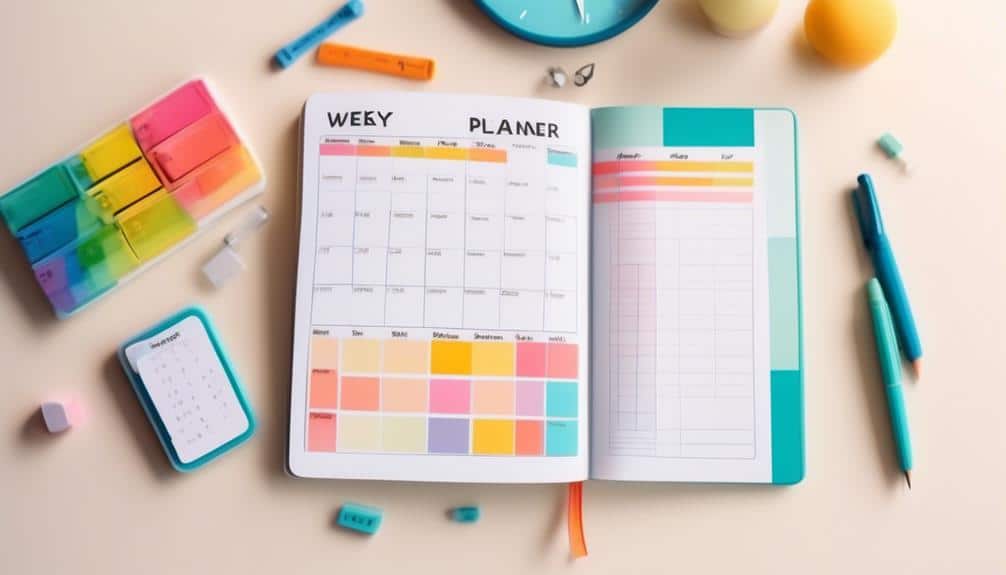Occupational therapy offers a nuanced and comprehensive approach to managing Attention Deficit Hyperactivity Disorder (ADHD), focusing on enhancing an individual’s ability to perform daily activities with greater ease and efficiency. The integration of strategies such as sensory integration techniques, structured reward systems, and mindfulness practices, among others, provides a tailored solution that addresses the unique challenges faced by those with ADHD. These methods aim to improve focus and attention and foster a sense of autonomy and success in various aspects of life. As we explore the seven best ADHD focus strategies within occupational therapy, it becomes evident that these interventions are more than mere tactics; they are transformative processes that encourage growth, self-awareness, and resilience.
The ensuing discussion will illuminate how these strategies are applied and their potential impact on individuals with ADHD, inviting a closer examination of their efficacy and adaptability in real-world scenarios.
Key Takeaways
- Sensory integration techniques and customized sensory diets are effective in enhancing focus and self-regulation in individuals with ADHD.
- Structured reward systems can help improve focus and self-regulation in individuals with ADHD by breaking tasks down into manageable steps and providing transparent reward systems.
- Calming zones provide a safe space for individuals with ADHD to manage sensory overload and emotional dysregulation, empowering them to navigate challenges with autonomy and resilience.
- Minimizing environmental distractions, such as creating a distraction-free workspace and implementing structured schedules with visual aids, can improve focus and productivity for individuals with ADHD.
Sensory Integration Techniques
Harnessing the power of sensory integration techniques, occupational therapists offer a range of strategies to support individuals with ADHD in processing sensory information more effectively, thereby enhancing focus and self-regulation. These therapy interventions are designed to fine-tune a child’s sensory processing skills, enabling them to navigate their environments with increased ease and confidence.
By identifying and addressing specific sensory needs, occupational therapy for ADHD aims to reduce sensory overwhelm, which can significantly impede attention and behavioral responses.
Implementing sensory strategies, such as heavy work activities, alternative seating options, and minor environmental modifications, plays a crucial role in maintaining sensory equilibrium. These approaches are tailored to meet the unique needs of each individual, promoting optimal arousal levels and attention span.
Furthermore, occupational therapists recommend tools like fidget toys, mindfulness practices, and specific environmental adjustments to support a child’s sensory processing. These interventions are not only practical but empathetic, acknowledging the challenges faced by individuals with ADHD and offering concrete solutions to improve their daily functioning.
Structured Reward Systems
Building on the foundation of sensory integration techniques, structured reward systems offer another practical approach in occupational therapy for enhancing focus and self-regulation in individuals with ADHD. Occupational Therapy Practitioners recognize the importance of behavior management in ADHD treatment and advocate for structured reward systems as a practical tool.
This method involves implementing a transparent system of rewards for completing tasks and achieving goals, essential for fostering a sense of achievement and motivation. Tasks are broken down into manageable steps to ensure the success of structured reward systems, with rewards provided for each step completed.
This breakdown makes tasks appear less daunting and encourages continuous engagement by offering frequent positive reinforcement. Tailoring rewards based on individual motivations and preferences is crucial; what motivates one individual may not necessarily motivate another.
Therefore, Occupational ADHD Focus Strategies Therapy Practitioners often use visual aids to track progress, visually representing the task and its associated rewards. Consistent application of the reward system is critical to encouraging sustained motivation and task completion, making it an invaluable tool in the arsenal of strategies for managing ADHD.
Calming Zones Implementation

Incorporating calming zones into environments such as classrooms and homes offers a strategic approach to supporting individuals with ADHD in managing sensory overload and emotional dysregulation. Occupational therapy emphasizes the creation of these specialized areas to aid children with ADHD in finding a peaceful retreat for self-regulation. By designating specific spaces as calming zones, we provide a physical and psychological haven with soothing items such as comfortable seating, weighted blankets, or calming sensory tools. These zones are physical spaces and sanctuaries for emotional management and mindfulness.
Strategies to enhance the effectiveness of calming zones include guiding individuals in using deep breathing and mindfulness techniques, which are crucial for managing moments of feeling overwhelmed. Occupational therapists play a vital role in teaching children with ADHD how to utilize these zones to take charge of their feelings and reactions.
Calming zones is a proactive strategy, fostering an environment where individuals can independently regroup and manage sensory overload. By embracing calming zone implementation as part of the therapeutic strategy, we empower children with ADHD to navigate their emotional and sensory challenges with greater autonomy and resilience.
Customized Sensory Diets
Attention Deficit Hyperactivity Disorder (ADHD) is a neurodevelopmental disorder that affects both children and adults. Understanding the disorder is essential in creating effective strategies for daily living. Evidence-based interventions such as behavioral therapy, coaching, and medication can help individuals with ADHD improve their functioning in academic, social, and professional settings.
Creating a daily routine that includes regular exercise, a balanced diet, and a distraction-free and supportive environment is essential to treatment. Practicing organizational skills, time management, and goal-setting techniques can assist in completing critical tasks. Positive reinforcement, behavior modification, and consequences can improve desirable behaviors while discouraging destructive behavior.
Interventions, such as executive function training, social skills training, and mindfulness techniques, can help individuals with ADHD complete assignments and improve their attention span. In academic settings, teachers can use preferential seating and extend the time for assignments. Healthcare providers and mental health professionals can help develop a comprehensive treatment plan and measure the effectiveness of interventions.
Collaborative approaches, such as behavioral coaching and parent training programs, can assist individuals with ADHD in developing executive function skills. Classroom management strategies, actionable strategies, and appealing activities can provide a supportive learning environment.
The ultimate goal of treatment is to create competent adults who prioritize joy in living. By addressing dysfunction in childhood safeguards, it is possible to build a future in which individuals with ADHD can take action to lead successful lives.
Customized sensory diets, designed to cater to the unique sensory needs of each individual, play a pivotal role in occupational therapy for managing ADHD symptoms effectively. These diets consist of tailored activities that provide the precise sensory input an individual requires, aiming to help them achieve sensory equilibrium. Incorporating heavy work activities is a common strategy, as it benefits most individuals by offering the necessary proprioceptive feedback to help regulate their sensory systems. Additionally, alternative seating options can significantly improve attention and focus.
Here’s a brief overview of the components of a customized sensory diet:
| Component | Description |
|---|---|
| Heavy Work | Activities involving pushing, pulling, lifting, or carrying provide proprioceptive feedback. |
| Alternative Seating | Options like wobble chairs or therapy balls to help improve focus and attention by meeting movement needs. |
| Sensory Input Adjustments | Tailored changes to the individual’s environment to ensure sensory needs are met without overwhelming them. |
| Monitoring and Adjustments | Regularly assess the diet’s effectiveness and make necessary adjustments to maintain sensory equilibrium. |
Occupational therapists work empathetically, understanding the individualized nature of ADHD symptoms and the importance of a customized approach. Through these sensory diets, individuals gain valuable strategies to navigate their sensory world more effectively, enhancing their focus and overall well-being.
Minimizing Environmental Distractions

Creating a dedicated, distraction-free workspace is a foundational step in minimizing environmental distractions for individuals with ADHD, facilitating improved focus and productivity in their daily tasks. Occupational therapy offers pragmatic strategies to support students with ADHD in navigating their environments more effectively. By understanding and implementing strategies to minimize distractions, individuals can enhance their ability to concentrate and succeed in academic and personal endeavors.
To further elucidate, here are three practical measures:
- Use Noise-Modulating Devices: To mitigate auditory distractions, implement noise-cancelling headphones or white noise machines. This helps in creating an acoustically neutral environment conducive to concentration.
- Organize and Declutter: A visually cluttered space can significantly impede focus. Regularly organizing and decluttering the workspace minimizes visual distractions, making it easier for students with ADHD to maintain attention on their tasks.
- Implement Structured Schedules: Utilizing visual schedules and timers aids task management and enhances time awareness. Setting specific times for focused work and incorporating regular breaks supports sustained attention and prevents burnout.
These strategies, rooted in occupational therapy principles, are vital in minimizing environmental distractions for individuals with attention deficit hyperactivity disorder, paving the way for enhanced focus and productivity.
Incorporating Mindfulness Practices
Transitioning from minimizing environmental distractions to incorporating mindfulness practices offers a complementary approach to enhancing focus and self-regulation in children with ADHD.
By integrating techniques such as deep breathing, body scans, and sensory activities, these practices aim to improve attention, reduce impulsivity, and foster emotional balance.
Mindfulness helps keep children engaged and equips them with strategies to manage stress and minimize distractions, which is crucial for success in various tasks.
Mindfulness Techniques Overview
Incorporating mindfulness techniques offers a potent tool for helping children with ADHD enhance their focus and remain anchored in the present moment. Occupational therapy embraces this approach, recognizing its profound impact on mental health and executive functions. By integrating mindfulness into daily routines, children can develop greater self-control and reduce impulsive behaviors, effectively navigating their environment with increased calmness and concentration.
Teach mindfulness techniques to help children stay present and focused, fostering an environment where they can thrive without being overwhelmed by external stimuli.
Incorporate calming scents as a sensory strategy to aid in concentration, enhancing the overall effectiveness of mindfulness practices.
Encourage deliberate attention to surroundings, which helps reduce and grow around in the present, managing stress through structured routines and mindful engagement.
Benefits of ADHD Focus
Building on the foundation of mindfulness techniques in pediatric occupational therapy, we explore the significant benefits these practices offer for enhancing focus and attention in individuals with ADHD.
These focus strategies improve concentration and bolster self-regulation and emotional management, crucial skills for navigating ADHD’s challenges.
Moreover, mindfulness practices are a powerful tool in managing stress and anxiety, improving overall well-being.
By fostering mindfulness, individuals with ADHD can develop enhanced impulse control and decision-making abilities. Additionally, these techniques aid in minimizing distractions, allowing for a heightened ability to concentrate on tasks.
The integration of mindfulness into occupational therapy presents a holistic approach to enhancing focus strategies, offering substantial benefits for individuals with ADHD.
Establishing Routine and Predictability

Establishing a consistent routine and predictability in daily activities can significantly enhance focus and manageability for individuals with ADHD. Occupational therapy plays a pivotal role in developing strategies that integrate seamlessly into everyday activities, fostering an environment where those with ADHD can thrive. By creating a structured framework for the day, individuals can easily navigate their tasks, reducing the stress that often accompanies time management and task initiation.
Key strategies include:
- Creating a Consistent Daily Schedule: This provides a predictable structure, helping individuals with ADHD understand what is expected and when. It minimizes the uncertainty that can lead to anxiety and procrastination.
- Utilizing Visual Schedules and Timers: These tools aid in transitioning between tasks and managing time more effectively. By visually mapping out the day, individuals can prepare for what comes next, reducing the overwhelm of sudden changes.
- Incorporating Breaks and Movement: Regularly scheduled breaks, especially those that involve physical activity, can significantly improve attention and self-regulation. This approach acknowledges the need to balance focused work and restorative pauses.
Frequently Asked Questions
How Can an OT Help Someone With ADHD?
Occupational therapists can assist individuals with ADHD by creating personalized accommodations, implementing behavior management techniques, and making environmental modifications to enhance focus and self-regulation, fostering a supportive and productive learning or working environment.
What Are the Goals of OT for Children With ADHD?
The primary goals of occupational therapy (OT) for children with ADHD are to enhance their academic performance, social interactions, and daily living skills by improving organization, time management, self-regulation, and motor skills.
What Are Five ADHD Focus Strategies That Can Be Helpful for Students With ADHD?
Five effective strategies for students with ADHD encompass implementing a sensory diet, behavior management techniques, using visual supports, providing personalized accommodations, and fostering an ADHD-friendly learning environment, each tailored to navigate the labyrinth of focus challenges.
What Is the Best Therapy Technique for ADHD?
The optimal therapy technique for ADHD varies individually, but integrating behavioral interventions with personalized strategies, such as environmental modifications and visual supports, often yields significant improvements in focus, self-regulation, and academic performance for those affected.
Conclusion
Attention Deficit Hyperactivity Disorder (ADHD) is a neurodevelopmental disorder that affects both children and adults. Understanding the disorder is essential in creating effective strategies for daily living. Evidence-based interventions such as behavioral therapy, coaching, and medication can help individuals with ADHD improve their functioning in academic, social, and professional settings.
Creating a daily routine that includes regular exercise, a balanced diet, and a distraction-free and supportive environment is essential to treatment. Practicing organizational skills, time management, and goal-setting techniques can assist in completing critical tasks. Positive reinforcement, behavior modification, and consequences can improve desirable behaviors while discouraging destructive behavior.
Interventions, such as executive function training, social skills training, and mindfulness techniques, can help individuals with ADHD complete assignments and improve their attention span. In academic settings, teachers can use preferential seating and extend the time for assignments. Healthcare providers and mental health professionals can help develop a comprehensive treatment plan and measure the effectiveness of interventions.
Collaborative approaches, such as behavioral coaching and parent training programs, can assist individuals with ADHD in developing executive function skills. Classroom management strategies, actionable strategies, and appealing activities can provide a supportive learning environment.
The ultimate goal of treatment is to create competent adults who prioritize joy in living. By addressing dysfunction in childhood safeguards, it is possible to build a future in which individuals with ADHD can take action to lead successful lives.


Recent Comments